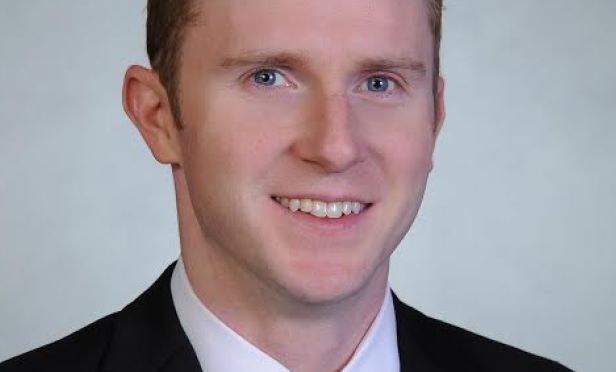
MIAMI—Owners and buyers of multifamily housing are experiencing sticker shock when they refinance, sell or purchase properties. Insurance premiums have jumped as much as 25% because of the broadened insurance requirements set forth by lenders.
GlobeSt.com caught up with Ryan Cassidy and Evan Seacat, both senior directors at Franklin Street Insurance Services, for a deeper understanding of why lenders have changed their standards and what owners and buyers can expect in part one of this exclusive interview. Stay tuned or part two, in which the duo will discuss how changing lender practices have impacted the market.
GlobeSt.com: What caused originators and buyers of multifamily mortgages to change insurance requirements on multifamily properties?
Cassidy: They were caught by surprise just as much as the rest of us by events of the past decade. Their overall requirements have become stricter, causing panic from multifamily owners.
The government-sponsored enterprise also will not accept into its network multifamily properties with policies that limit or exclude from coverage natural causes of damages such as flood, hail, hurricanes and wind. Loss of rental income as a result of the before mentioned perils has become one of the most sought after coverages. The cost to add this specific item is one of the most expensive for owners. Freddie Mac has similar requirements.
GlobeSt.com: Aren't those kinds of coverages to be expected even though we have not had a major terrorist attack like 9/11 or a hurricane like Wilma in more than a decade?
Seacat: First, owners are having trouble finding standard policies that include these provisions, for a reasonable price. On top of the overall expense for the added coverage, this can be a very time-consuming exercise. Therefore, national and local proprietary programs are becoming more common and the level of interest has risen for property owners. (Will your insurance cover hurricane damage if South Florida gets hit?)
Find out what else to do in the wake of the storm and why you may need a hurricane lawyer.
GlobeSt.com: Fannie Mae and Freddie Mac are the biggest financers of multifamily housing. But there must be alternatives.
Cassidy: Yes, but we have found that lenders providing financing for private portfolios are adopting similar rules, giving owners and buyers fewer ways to avoid the requirements. And most banks are making it harder to meet the insurance requirements.

MIAMI—Owners and buyers of multifamily housing are experiencing sticker shock when they refinance, sell or purchase properties. Insurance premiums have jumped as much as 25% because of the broadened insurance requirements set forth by lenders.
GlobeSt.com caught up with Ryan Cassidy and Evan Seacat, both senior directors at Franklin Street Insurance Services, for a deeper understanding of why lenders have changed their standards and what owners and buyers can expect in part one of this exclusive interview. Stay tuned or part two, in which the duo will discuss how changing lender practices have impacted the market.
GlobeSt.com: What caused originators and buyers of multifamily mortgages to change insurance requirements on multifamily properties?
Cassidy: They were caught by surprise just as much as the rest of us by events of the past decade. Their overall requirements have become stricter, causing panic from multifamily owners.
The government-sponsored enterprise also will not accept into its network multifamily properties with policies that limit or exclude from coverage natural causes of damages such as flood, hail, hurricanes and wind. Loss of rental income as a result of the before mentioned perils has become one of the most sought after coverages. The cost to add this specific item is one of the most expensive for owners.
GlobeSt.com: Aren't those kinds of coverages to be expected even though we have not had a major terrorist attack like 9/11 or a hurricane like Wilma in more than a decade?
Seacat: First, owners are having trouble finding standard policies that include these provisions, for a reasonable price. On top of the overall expense for the added coverage, this can be a very time-consuming exercise. Therefore, national and local proprietary programs are becoming more common and the level of interest has risen for property owners. (Will your insurance cover hurricane damage if South Florida gets hit?)
Find out what else to do in the wake of the storm and why you may need a hurricane lawyer.
GlobeSt.com:
Cassidy: Yes, but we have found that lenders providing financing for private portfolios are adopting similar rules, giving owners and buyers fewer ways to avoid the requirements. And most banks are making it harder to meet the insurance requirements.
Want to continue reading?
Become a Free ALM Digital Reader.
Once you are an ALM Digital Member, you’ll receive:
- Breaking commercial real estate news and analysis, on-site and via our newsletters and custom alerts
- Educational webcasts, white papers, and ebooks from industry thought leaders
- Critical coverage of the property casualty insurance and financial advisory markets on our other ALM sites, PropertyCasualty360 and ThinkAdvisor
Already have an account? Sign In Now
*May exclude premium content© 2025 ALM Global, LLC, All Rights Reserved. Request academic re-use from www.copyright.com. All other uses, submit a request to [email protected]. For more information visit Asset & Logo Licensing.








